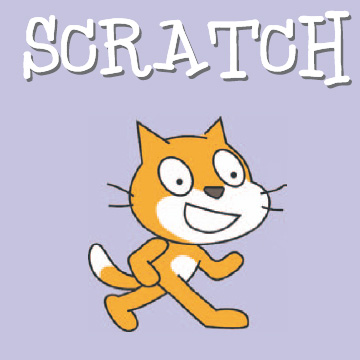I have been posting quite a bit on Minecraft lately, but I have also been exploring Scratch as well. I have used Scratch in the past, but am trying to work through it from a Computational Thinking perspective.
I am working on a new idea that I would like to learn how to do myself. I am an avid fan of makerspaces and bringing the intangible to the tangible. One thing I have noticed through my engineering program, robotics camps and teams, and projects in our curriculum is that students have a hard time bringing their ideas to life. Many can brainstorm and sketch an idea, but cannot actually implement the idea. Others can do great things on the computer, but when pressed to create a working model they struggle. There is a disconnect between all the simulations, apps, and games they play and actually designing and creating on their own.
One idea that I want to add to my skill set so it can implemented into various projects is to take programming on a computer and have it affect the real world. I am inspired by a video I watch a while back where in Scratch people programmed a bouncing ball move from the left side of the screen to the right side of the screen where it would then trigger LEGO WeDo to actually move and physical build of a bouncing ball to roll to the next screen where this process would continue i.e. virtual bouncing ball → physical bouncing ball → virtual → physical. In essence I want to create a Rube Goldberg machine.
As I explored the contents of the Scratch and the many projects created I placed a focus on LEGO builds. I want to see what others have done to gain inspiration for my project to take things to the next level.
The first one that struck my interest was this one where a balance was built. I was thinking this would be an interesting piece to add to this collaborative project where someone would create a similar model that would trigger something to move from one side of the balance to the other.
Another option is this simple build for a moving car that could also trigger movement from one computer to the next. I have many years of LEGO Education experience so we could create something a little nicer, but it works and displays that you don’t need anything fancy to make ends meet. We believe in the KISS method(Keep It Simple Stupid) which is good when working with students because they often try to overcomplicate their ideas.
Finally, the other option I was looking at was the actual Scratch platform. For screen display it could be simple of an object simply moving across, but I want something better than that. This project showcases one idea where a modified Rube Goldberg machine could be created within one program ending with the trigger of a physical object.
These three ideas have helped me to develop a plan of action for my project. This project is aimed at middle schoolers, but I would love implement this idea into PD training for educators as well. Looking at the standards of Iowa Common Core my focus will be on 21st Century Skills. We could easily add some content standards, but these would only be added after working with teachers to make it connect to their classroom needs. In general this idea will seek to capture these standards
Technology Literacy
21.6–8.TL.1
Essential Concept and/or Skill: Demonstrate creative thinking in the design and development of innovative technology products and problem solving.
21.6–8.TL.2
Essential Concept and/or Skill: Collaborate with peers, experts, and others using interactive technology.
21.6–8.TL.3
Essential Concept and/or Skill: Plan strategies utilizing digital tools to gather, evaluate, and use information
21.6–8.TL.4
Essential Concept and/or Skill: Use critical thinking skills to conduct research, solve problems, and make informed decisions using appropriate technological tools and resources.

I think you saw this post a while back… from Andrew Clark. You should be able to modify the idea to suit your needs. Another thing I would do is make a pen plotter out of lego that you control with scratch. That way they would get quick feedback and be able to troubleshoot some of the communication issues. I always like to work from simple to complex.
We received some inspiration for an activity from this group a few months back, so we thought we should make an effort to return the favour J.
One of our after-school robotics classes just finished our “Incredible Machine” unit. The kids are required to plan the layout and overall design BEFORE touching any LEGO, and then have to keep communicating with the rest of the class to make sure the final product is going to work. It’s a challenging task, and we were impressed with the result!
If you’re interested, check out http://youtu.be/_v5IPvth_gE to see a video of the machine in operation.